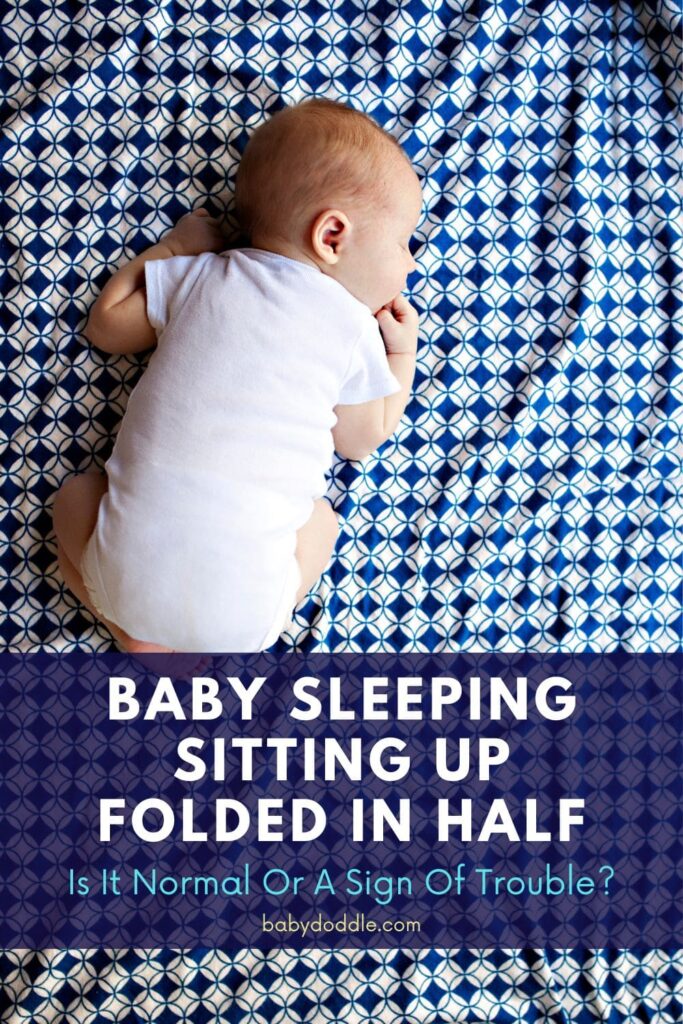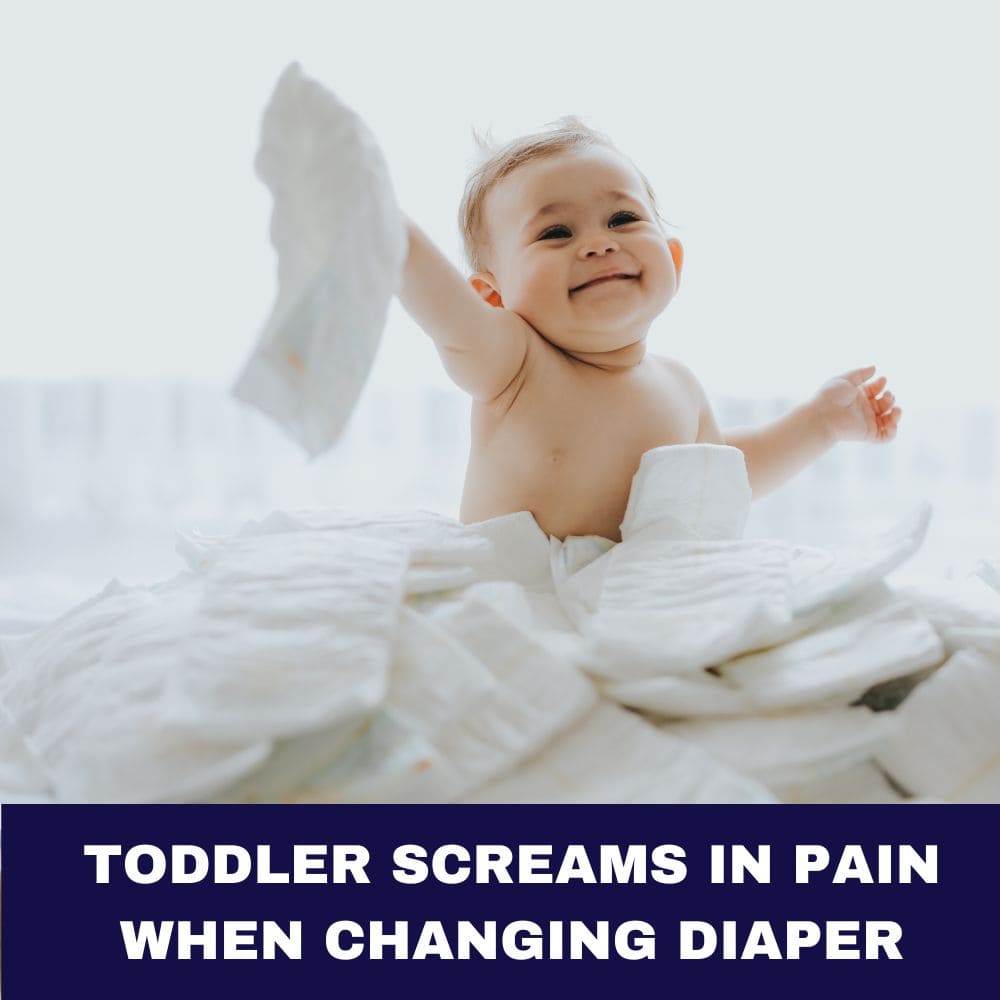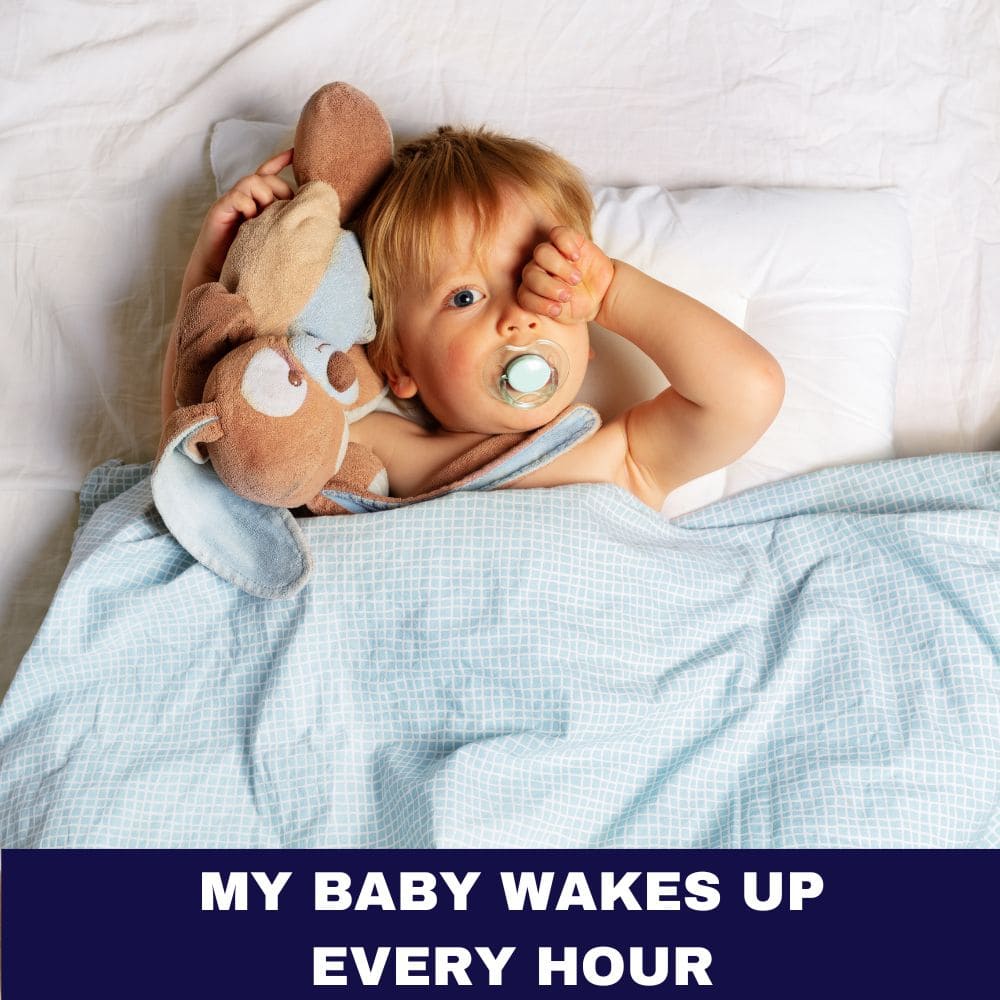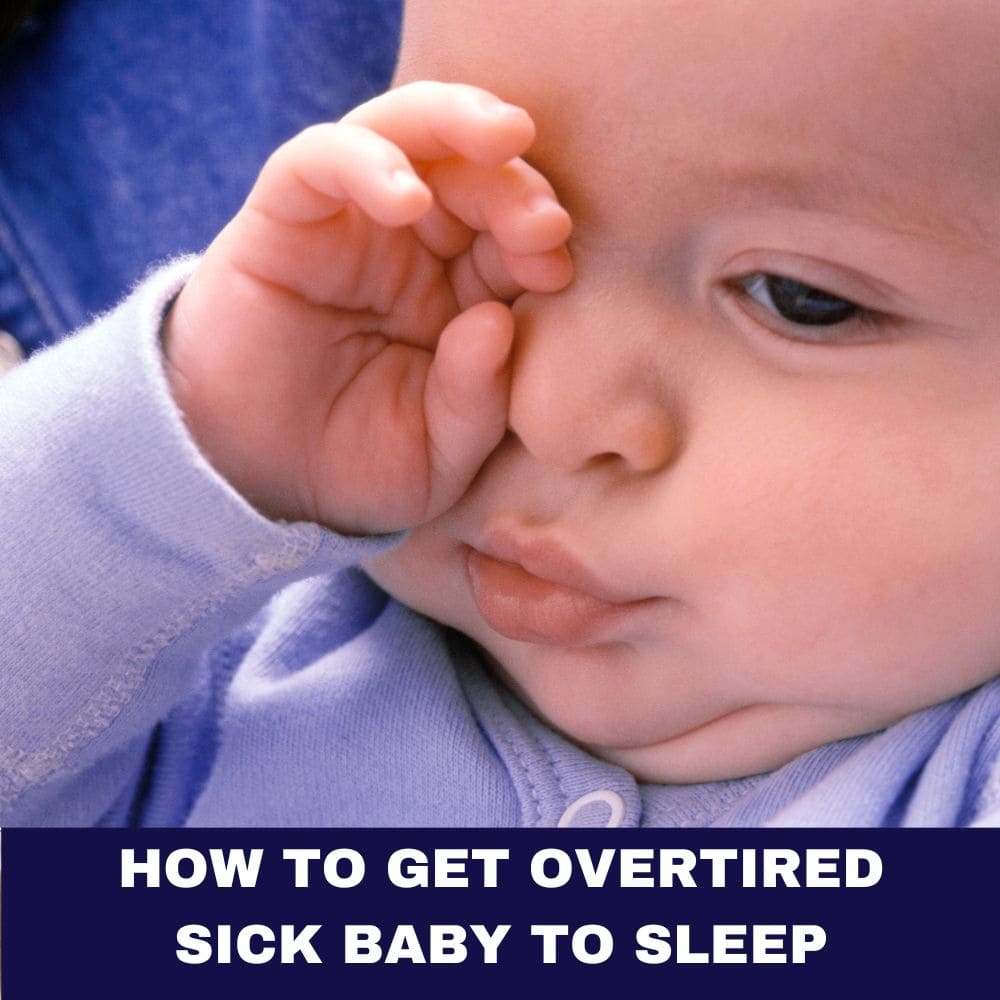As a parent trying to catch some shut-eye yourself, few things make your heart stop like checking on your baby only to find them folded in half fast asleep. Their little legs splayed out while their torso slumped forward with their head curling towards their feet may seem alarming. You may worry it restricts their breathing, indicates an underlying issue, or could become a dangerous sleep crutch over time. What Does It Mean When a Baby Sleeping Sitting Up Folded in Half?
But folded or seated sleeping actually emerges as a common phase around 6 months old for many typically developing babies. Let’s explore what causes this cute contortion, if you should intervene, tips for safe inclined sleep, and when to seek input from their pediatrician.

What Does It Mean When a Baby Sleeps Folded in Half?
Many parents notice their 5-12-month-old babies suddenly begin sleeping in unusual upright positions, often with their torso folded over their legs in a curled C-shape. Reasons this age may spark seated sleeping preferences include:
- Developing midline head control – Around 5-6 months old, babies gain enough neck muscle strength to hold their head centered without flopping. This allows them to sit with support and eventually sleep.
- Desire to see surroundings – Babies become actively eager to see their environment around 6 months old. Propped sitting facilitates alert interaction and seeing bed surroundings may comfort them.
- Acid reflux or congestion – Infant reflux or sinus stuffiness often peaks around 6 months too. Elevated sleep may relieve symptoms letting them doze off peacefully.
So your contortionist baby may be showing off new skills allowing alert sitting, taking in exciting views, or just finally getting comfy. Understanding root causes brings peace of mind!
When to Be Concerned: Signs Folded Sleeping Isn’t Normal
While folded sleeping normally emerges between 6-9 months, certain red flags suggest an underlying condition requiring further evaluation:
- Breathing Issues: Listen for labored breathing, coughing, or changes in skin color while folded. Reposition immediately if baby seems distressed and consult your pediatrician to identify respiratory or airway disorders needing accommodation.
- Muscle Stiffness: Gently try to straighten the baby’s legs/back during diaper changes. Pain reactions, refusal to unbend the torso, or difficulty sitting upright while awake may indicate neurological or orthopedic impairment worth investigating via imaging scans.
- Intensifying Positional Preferences: If clinging to folded sleep positions intensifies beyond 12 months rather than fading, babies likely rely on this stance to relieve other untreated symptoms. Discuss causes and treatment options with your pediatrician before secondary complications arise.
- Secondary Issues: Closely monitor folded sleepers for signs of additional problems like flattening part of the skull. Worsening resistance to position changes also warrants medical input to prevent long-term disability.

At What Age Can Babies Start Sleeping Upright?
Independent sitting begins emerging around 4-6 months old as infants gain necessary head, trunk, and arm strength. But until neck muscles fully stabilize their heavy bobbling heads, sleeping fully upright remains risky. Most babies master balanced sitting closer to:
- 6 Months: May tolerate supervised upright supported sleep propped with pillows
- 9 Months: Able to sleep sitting solo in cribs or playpens without dangerous falling
So folded sleeping typically appears between 6 and 9 months old corresponding to midline head control milestones. But always provide backups like pillow barriers for safety until sitting is rock solid!
| Cause | Description | Symptoms/Signs |
|---|---|---|
| Acid Reflux | Peak reflux at 6 months causes discomfort | Fussiness during/after feeds, frequent spit up |
| Congestion | Difficulty breathing prompts inclined sleep | Runny nose, coughing fits |
| Poor Head Control | Bobbling heads need support to prevent injury | Head lag when pulled to sit, lack of midline focus |
| Failure to Thrive | Low muscle tone requires intense calorie burn for strength | Falling off growth curves, developmental delays |
Tips to Support Safe Sleeping Sitting Up
While inclined sleep suits some infants, it also risks toppling over or airway blockages without adjustments:
- Use tight-fitting crib sheets to avoid loose fabric wrapping around the baby’s face
- Place extra pillows or rolled towels around them as fall barriers
- Try a thin pillow under their bottom for stability
- Elevate the mattress for gradual reclining to a flat
- Position the crib near your bed for easier checking
Propping to exactly support desired positions takes trial and error. But preventing a nighttime tumble is worth the effort for rare peaceful folded sleep!
Setting Up The Crib For Safe Folded Sleep
Creating a protected sleep space tailored to your folded sleeper’s needs requires some crib adjustments. But a few simple tweaks can prevent injury and minimize safety risks:
- Crib Bedding: Use breathable mesh liners instead of loose sheets that may wrap around the baby’s face. Any bedding should allow ample airflow in case breathing is compromised.
- Mattress: Select a reinforced mattress without impressions for even support. Waterproof protectors prevent sinking into crevasses. Portable foam wedges offer customizable inclined angles.
- Barriers: Install bumper pillows, rolled towels, or crib pop-up tents around sleep areas. Having barriers on all sides catches babies toppling over while strengthening sitting skills.
- Anchors: Tie canopies, hammocks, or suspended sleeping pods firmly to cribs so inclines stay fixed. Use tight crib sheets unable to loosen and swaddle sack up sleepers unable to wriggle free.
Creating a Baby-Proof Sleep Space
In the interim, if inclined sleep best meets baby’s needs, optimize safety precautions:
- Use mesh liners instead of loose sheets to allow airflow
- Install baby breathing monitors for alerts to disturbances
- Check frequently, especially if congestion makes breathing harder
- Attach crib tent canopies firmly to prevent dangerous dislodging
- Select foam crib wedges more stable than pillow props
No inclined sleep system removes risks entirely. But carefully designed, breathable sleep spaces lower the odds for scary rolled-over discoveries. Consult pediatricians to address unique baby needs.

Developmental Milestones Related To Folded Sleeping
Curious when your baby might outgrow their folded sleeping phase? Understanding which emerging developmental milestones enable and end this phenomenon provides clues for when transitions feel less forced:
- Head Control & Vision Skills: Folding often starts around 5-6 months as midline neck strength develops allowing upright alignment. Babies also actively strengthen muscles to see their surroundings.
- Sitting Independently: Solo sitting balance matures around 9 months for most infants. This reduced toppling risk ends the need for protective folded stances.
- Social Interest: Folded propping facilitates seeing exciting environments. As familiarity intensifies, the novelty and need for better views fade.
Medical Conditions That Could Cause Folding Sleep Positions
While comfy upright sleep works for many healthy babies, be alert for other potential medical reasons for contorted sleep including:
- Acid reflux – Folding crunches the stomach potentially relieving infant heartburn at this peak age.
- Inner ear infections – Fluid pressure and nausea may prompt babies to sleep at an incline.
- Spinal issues – Rare disorders like myelomeningocele could hamper muscle control forcing unusual positions.
Discuss any related symptoms with your pediatrician and request an orthopedic evaluation if the baby resists straightening their back when awake. Getting to the root cause ensures the best treatment.
The Psychology Behind Folded Sleeping
Beyond the physical factors enabling folded sleeping, understanding babies’ mental state also provides insight:
- Feeling insecure falling asleep alone may prompt searching for comforting curled positions
- Becoming overstimulated yet fighting sleep could lead to tense muscle clinging
- The startle reflex still emerging causes waking triggers prompting protective posture
Knowing folded sleep may signal a baby feeling unsafe allows parents to focus solutions on nurturing trust before transitioning positions. Respond sensitively to underlying emotional needs fueling the curled stance.
When to Talk to The Pediatrician
Most folded sleeping around 6-9 months old indicates safe independence milestones rather than concerns. However, promptly consult your pediatrician if baby displays:
- Labored breathing, coughing, or changes in skin color while curled sleeping
- Refusal to straighten torso/legs or difficulty sitting upright awake
- Signs of pain straightening their back like sharp cries
- Preferences for folded sleep that intensify beyond 12 months old
Monitoring breathing issues, stiffness difficulties, or worsening resistance to position changes warrants discussing a potential underlying disorder needing accommodation or treatment.
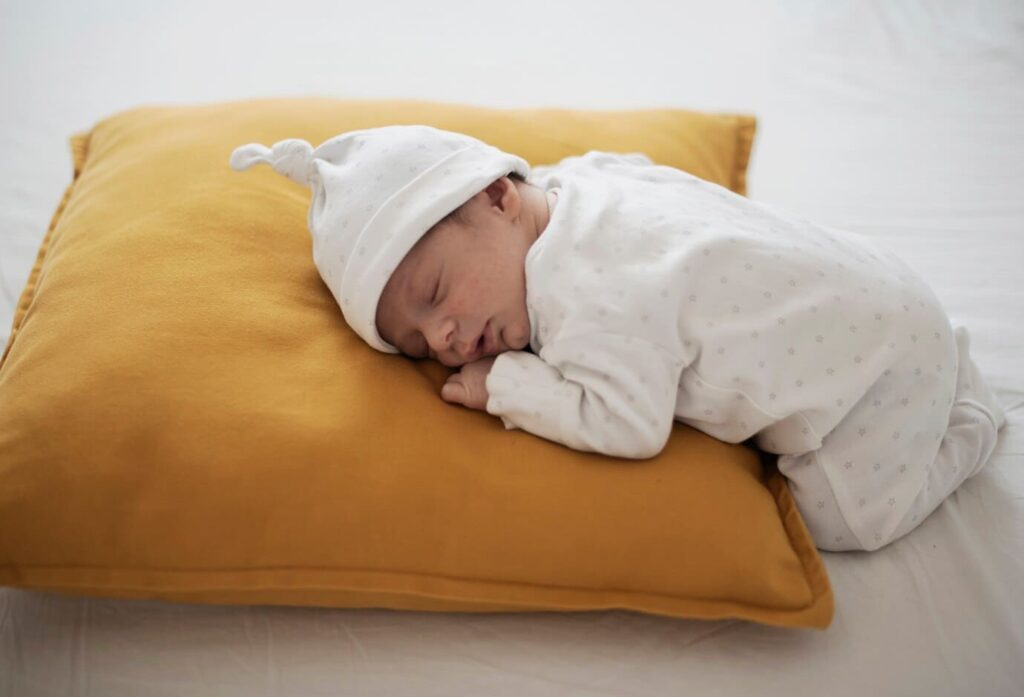
Prevention Tips for Folded Sleeping
While many babies grow out of folded sleeping by 9 months, parents can proactively encourage healthy sleep habits from the start:
- Emphasize plenty of supervised tummy time during awake periods to strengthen neck and back muscles for self-correction
- Use reinforced mattresses and sleep sacks instead of loose bedding to prevent dangerous sinking or wrapping
- Try white noise to calm babies before sleep, reducing needs to resort to folded comfort positions
- Keep the room cooler (around 65-70 ̊F) to support sound sleep with flat alignment
Establishing healthy sleep foundations early may prevent resorting to folded sleep crutches later even when reflux or stuffiness strikes.
| Safety Concern | What to Monitor | Warning Signs to Report |
|---|---|---|
| Breathing Issues | Reposition if breathing seems distressed | Skin color changes, sucking stomach |
| Overheating | Feel for sweat in folded neck crevices | Flushed skin under folds |
| Skin Breakdown | Watch for reddening or sores | Unexplained rashes, bleeding |
| Stiffness | Massage after naps checking range of motion | Refusal/difficulty straightening spine |
Unique Risks of Folded Sleeping Worth Noting
While folded sleeping generally resolves by baby’s first birthday without intervention, parents should still note hazards that may prompt earlier action:
- Unexpected night awakenings increase when contorted as pain or poor sleep disrupts dozing
- Chronic folded sleeping can flatten soft skulls when always resting on one side
- Slight airway risks remain as neck bends can obstruct breathing, especially when congested
So while not an emergency, proactively addressing persistent folded sleeping before age one helps minimize secondary issues. Don’t panic but do start rethinking sleep set-ups.
Sleep Training Tips To Transition Out of Folded Sleep
If you feel ready to transition folded sleepers into safer, traditional crib alignments, gentle sleep training techniques can pave an easier path:
- Gradual Weaning: Incrementally fade out inclined supports over several weeks. Lower folded angles slightly more each day until flat.
- Added Comfort: Increase soothing rubs, transitional objects, white noise, or other aids substituting the comfort once found in contorted positions.
- Loving Persistence: Expect some fussing during the adjustment process. But with compassionate consistency, protest normally fades within a week.
- Seek Guidance: If significant distress emerges, take a step back and reconsider timelines. Consult sleep trainers to tailor a plan that suits the baby’s needs.
Transitioning Baby to Safer Sleep Positions
If folded sleeping worries you or persists beyond their first birthday, try gently easing them towards safer alternatives:
- Initially recline their inclined seat a few more degrees each week
- Place your hand behind their back during feeds to remind midline positioning
- Increase tummy time strengthening back mobility
- Practice picked-up cuddles in straight positions before naps
- Redirect their attention if they try folding over when drowsy
Consistent baby steps in transitioning to healthier alternatives prevent frustration. But always respect preferences indicating possible medical relief. Securing answers from their doctor ensures their unique needs get fully addressed!
In summary, discovering your baby snoozing while folded in half may be startling but is often normal between 6 to 9 months old. Assess for breathing issues and discuss musculoskeletal causes if concerned. Otherwise, enjoy the temporary contortionist phase as a sign of their blossoming mobility milestones!
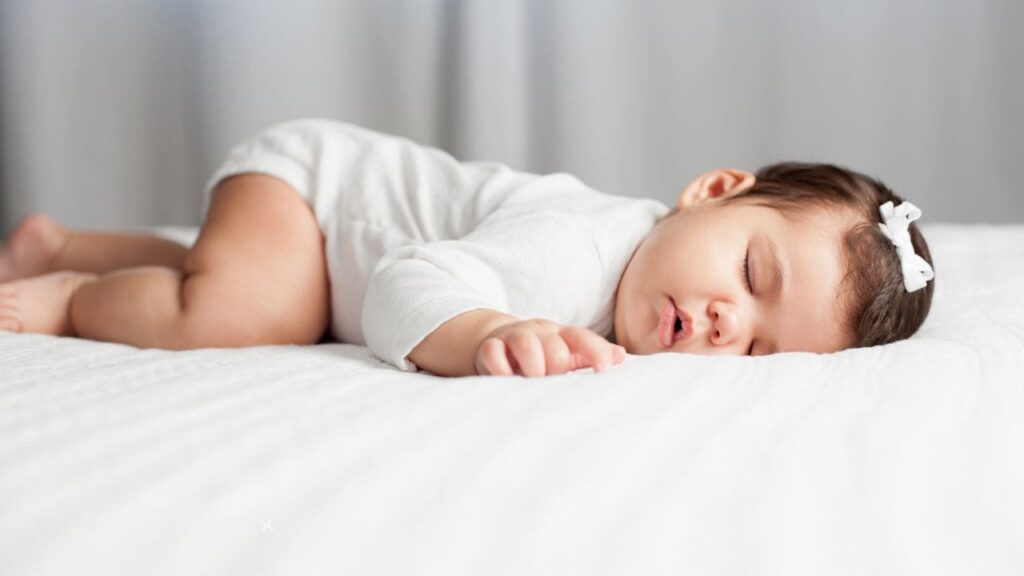
Sleep Training Folded Sleepers
If folded sleeping persists beyond attempts to transition for safer alternatives, implementing patient sleep training techniques may help:
- Try fading out folded support in gradual increments over weeks (lower inclines slightly each day)
- Provide extra soothing like gentle back rubs to ease the change process
- Use transitional objects for security when taking away incline support
- Expect some protesting at first but remain calmly consistent
- Seek sleep training guidance from pediatricians if baby becomes distressed
With loving persistence, infants often successfully switch out of folded sleep positions through step-by-step training approaches.
Supporting Your Folded Sleeper Safely
Discovering your baby snoozing folded in half can certainly startle any parent. But try not to panic. Between months 6 and 9, this contorted sleep position frequently emerges as a normal phase accompanying infant development milestones.
As your baby’s pediatrician, my top priority is keeping your little one safe while respecting their evolving needs. If you have any concerns about breathing issues, muscle control difficulties, acid reflux, or other complications, please reach out right away. I’m here to help assess if an underlying disorder requires treatment.
In the meantime, we can collaborate on creating a protected sleep environment meeting your baby’s preferences. Experiment with crib adjustments allowing slight elevation or barriers preventing falls until sitting skills strengthen. And know this curled-up season will likely pass as quickly as it arrived.
Raising infants often means rolling with the punches of hilarious, peculiar, and downright confusing behavior. But with responsive caregiving, close monitoring, and my support, you’ve got this! We’ll overcome the challenges folded sleeping poses together, one sweet step at a time.
Questions To Ask The Pediatrician About Folded Sleep
If folded sleeping concerns you, come prepared with questions for your pediatrician seeking tailored advice:
- Could an underlying disorder like reflux or allergy sensitivity explain the desire for inclined folded sleep? How can we test and treat root causes?
- What tests like imaging scans or neuromusculoskeletal assessments do you recommend to catch developmental disorders necessitating intervention for muscle stiffness or asymmetry issues?
- How long should we trial faded sleep training before determining folded positional preferences require long-term accommodation like specialized cribs?
FAQs – Baby sleeping sitting up folded in half
At what age do babies start sleeping sitting up folded in half?
Folded or upright seated sleeping typically emerges between 6-9 months as babies gain midline head/neck control allowing them to sit independently. But provide proper support until balance and coordination is robust.
Why does my baby suddenly prefer sleeping while folded in half?
There are a few reasons around the 6-9 month stage that can prompt babies to begin sleeping in folded or inclined positions:
- Developing head control enables them to prop themselves up and see surroundings
- Folded positions may relieve reflux or congestion that tend to peak at this age
- They discover new comfortable ways of sleeping aided by increased mobility
So in most cases, folded sleep indicates they are exploring new positions enabled by growing strength and skills. It is rarely cause for concern on its own.
When should I transition my baby out of the folded sleep position?
Most experts recommend transition by 12 months old if not earlier. Persisting much beyond the 1st birthday risks:
- Chronic flat head spots and poor neck muscle development
- Continued sleep crutches reliant on inclines hampering self-soothing
- Ongoing safety concerns like airway obstruction with prolonged chin-to-chest
If folded sleeping worries you or fails to resolve by 9 months old, try gentle redirection like placing baby flat on their backs when drowsy. But expect some temporary frustration!
Is it safe for my 8 month old to sleep sitting up crossed legged?
At 8 months, most babies have the neck control to sleep upright safely. But use tight crib sheets, barriers to avoid falling, and supervise initially until you’re confident they can catch themselves if unbalanced during sleep.
When should I call the doctor about my baby’s folded sleep position?
Consult your pediatrician promptly if baby has labored breathing folded over, won’t/can’t straighten out when awake, shows pain uncurling their back, or resists flattening their sleep position after 12 months when mobility typically improves.
